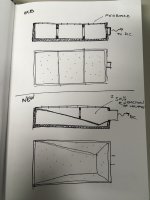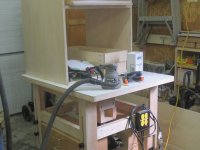I am a high school wood shop teacher and I'm contemplating ways to manage dust from all the orbital sanders in our shop. Our health & safety guy is suggesting a downdraft table, but for 8 kids sanding at once, that will require a large table at a cost of around 10k. I'm thinking for that amount of money I could outfit the shop with 6-8 vacs and sanders for about half that. Have you guys seen how current production shops handle this sort of thing? When I was working in production shops, there was no such thing as dust collection for much of anything. IF we had it, it was for table saws only and overhead belt sanders, only.
Production Downdraft Table vs Multiple Sanders & Vacs
- Thread starter climb.on
- Start date


